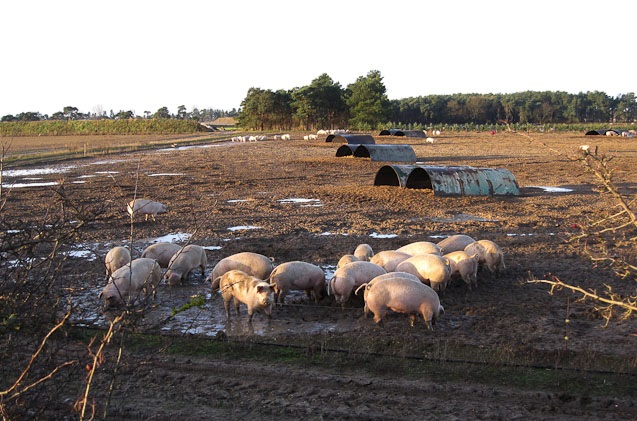
Growing urbanisation of the British countryside is threatening national food production, says the National Pig Association.
There are concerns that planning applications for traditional part-time pig units are now meeting with opposition.
"Britain already imports around 60 percent of its pork and pork products — usually from less welfare-friendly farms — and this figure is set to rise unless farmers are encouraged to invest in new more efficient and environmentally-friendly buildings" the association said.
NPA has identified a growing trend for vegan groups and other single-interest lobby groups to become involved in planning applications, using misinformation to frighten local residents into opposing new and replacement pig farms.
"In the past, pig farmers who wanted to build a new pig unit, usually to replace inefficient old buildings, could work constructively with local residents to address any concerns they might have," said NPA general manager Dr Zoe Davies.
"But now they are being targeted by aggressive single-issue organisations with no local connections. We have even heard of pig farmers who have received threatening phone calls and emails from the other side of the world, accusing them of being ‘factory farmers’, which they most certainly are not.”
One of the problems, according to NPA, is that since the attempt to build a US-style “super dairy” at Nocton in Lincolnshire three years ago, vegan groups have pounced on all proposed livestock housing developments, describing them as “mega farms” and “factory farms”.
There are no “mega” pig farms in Britain and no applications to build any, says NPA. Most pig applications are for modest-sized pig units which will be part of a traditional mixed farm, where the pigs eat the grain grown on the farm and provide organic manure for the crops, in place of chemical fertilisers.
Even applications for larger pig units which will operate as stand-alone businesses bear no comparison to the large pig units being constructed in the United States, says NPA. And unlike most of Europe’s key pig-producing countries, Britain has a very small pig population, so the problem of local pig density does not arise.
So concerned is NPA about the growing opposition to new and replacement pig units, it intends to produce a leaflet for planning authorities and local residents, putting the size of new developments in perspective.
It will point out, for example, that a building for 1,500 finisher pigs falls far short of being a “mega farm”, being a modest venture that will not provide a living income on its own, but will add a small extra income to a farm business that might otherwise struggle to be sustainable.
In contrast the average commercial finisher unit in the United States will have 12 or more such buildings.
And in the US, most pigs are born on breeding units housing 5,000-10,000 sows — more than double even the largest breeding units in Britain and more than ten times the size of an average British breeding unit.
“I would urge all planning authorities to recognise that investment in farming is essential to keep the countryside alive,” said NPA chairman Richard Longthorp.
“And people who live in villages but drive into towns and cities every day to work, should consider the needs of those who work in the rural economy and keep the countryside alive whilst they are away during the day.
“They should remember that pig farms employ a huge number of people indirectly, including hauliers, millers, meat plants, electricians, plumbers and builders.”
